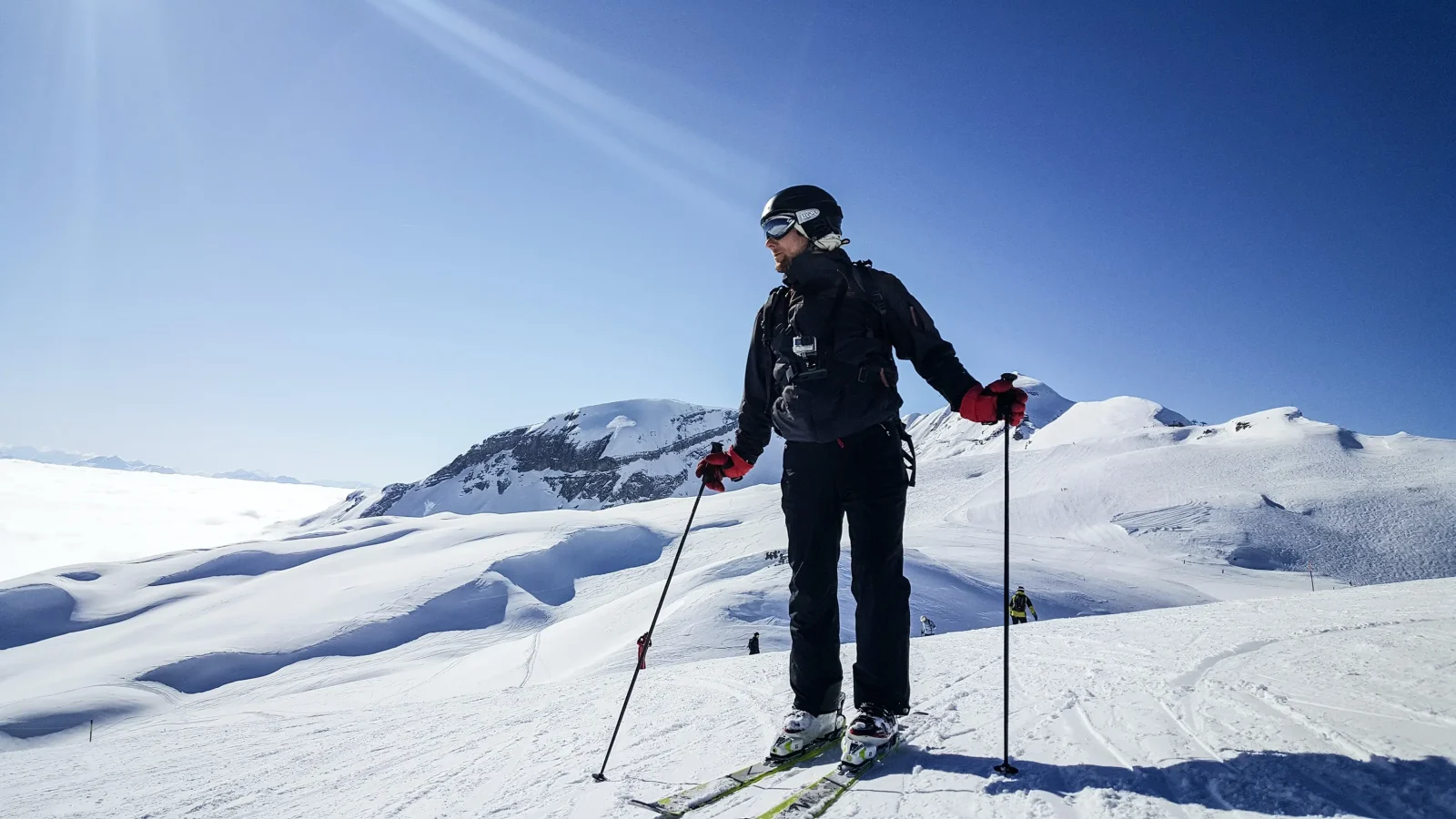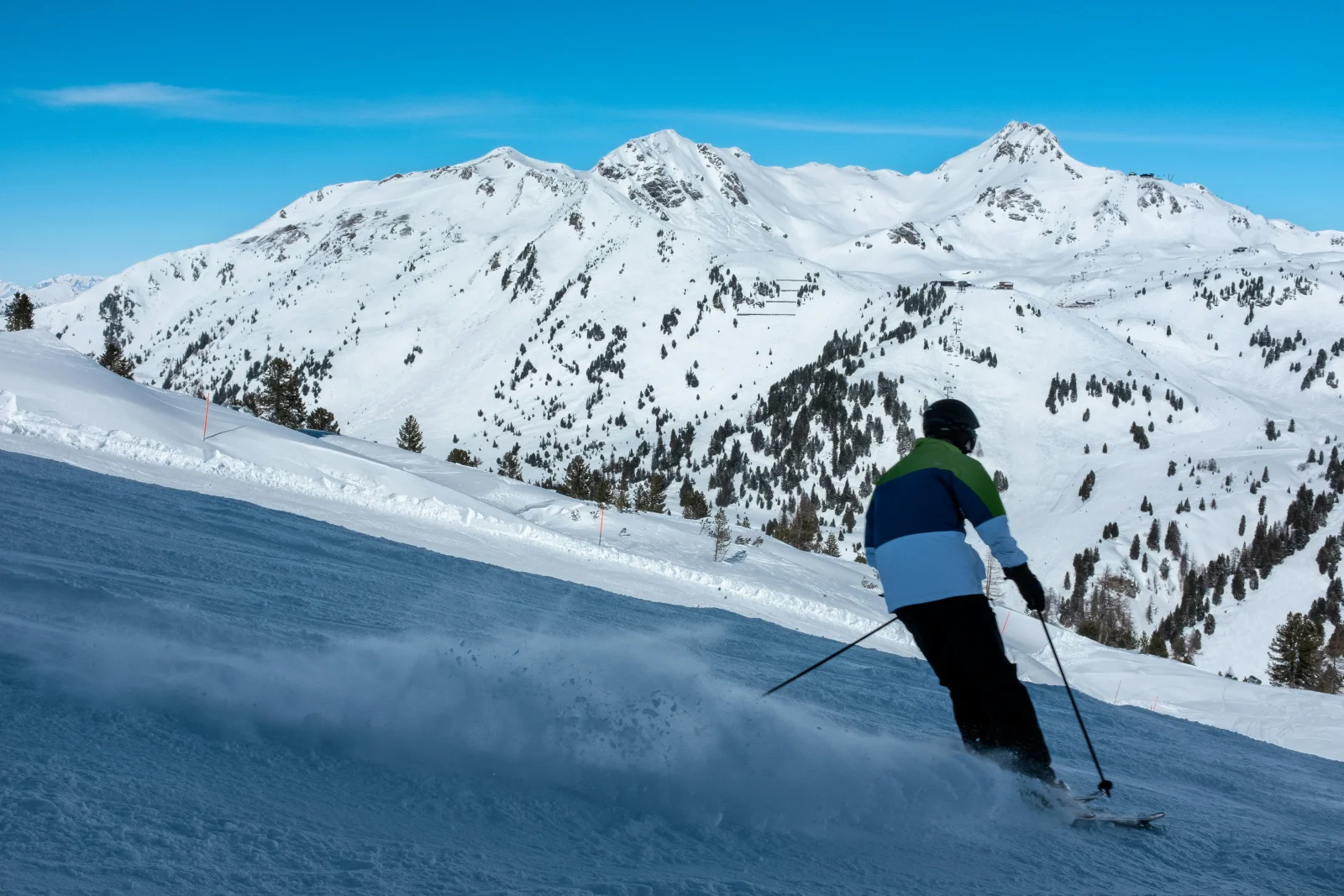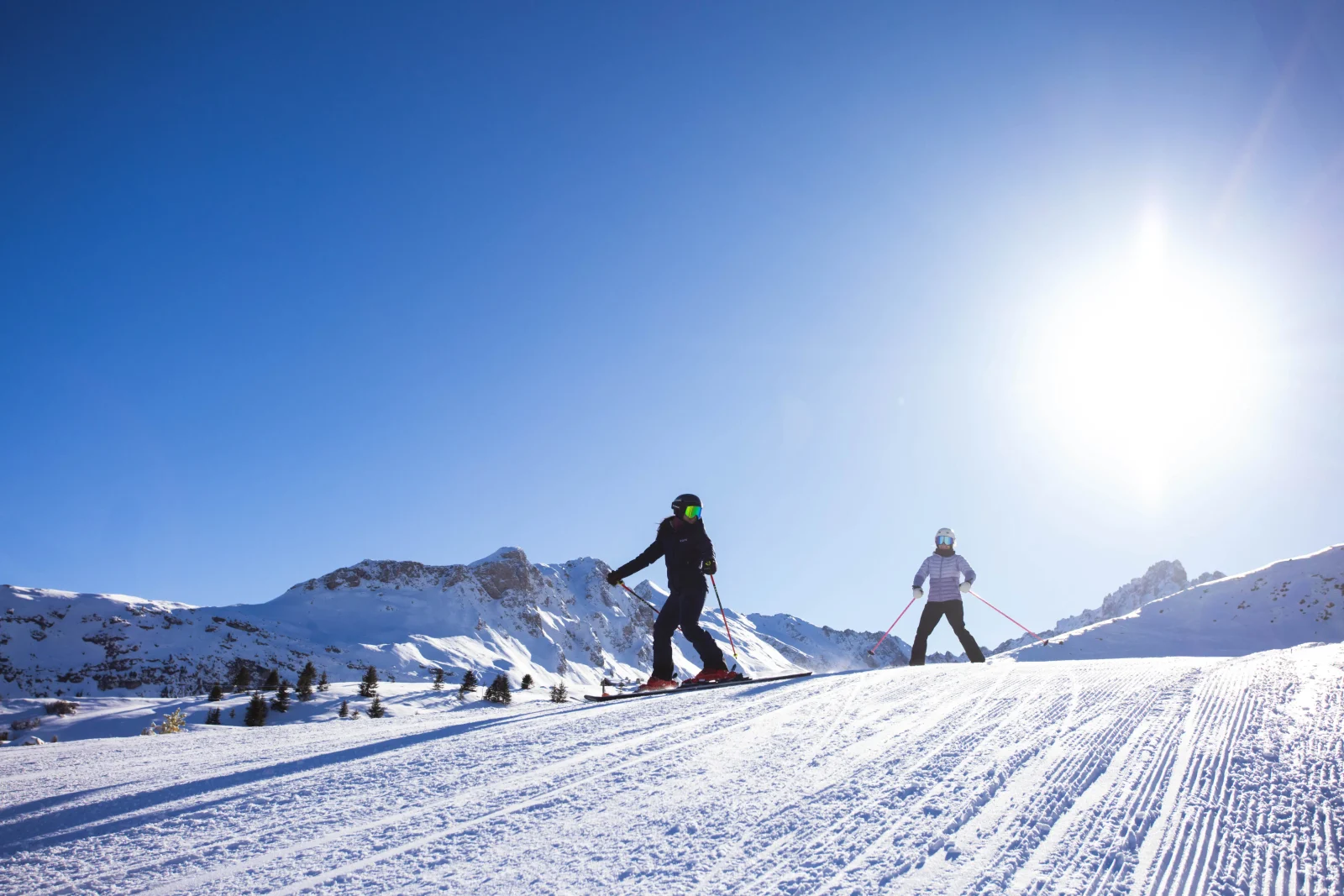History of Cross-Country Skiing
Despite the modern-day popularity of downhill skiing, cross-country skiing actually came first! Cross-country skiing, also known as Nordic skiing, is a discipline that originated 5,000 years ago in Scandinavia as a more convenient way of getting around when the streets were heavily covered in snow. Today, cross-country skiing is practised and enjoyed in ski resorts across the world like any other snow sports discipline.
If you don’t fancy skiing downhill or want to try something new, cross-country skiing is a great way to discover the spectacular scenery of a resort from a new perspective. Cross-country trails are often in parts of the resort you wouldn’t normally see, so you can explore beautiful tracks through the trees and around lakes, away from the downhill skiers and snowboarders.
Find out everything you need to know about cross-country skiing in our ultimate guide below!

What is Cross-Country Skiing?
Cross-country skiing doesn’t involve going up the mountain using ski lifts and skiing back down but is practised on assigned tracks around ski resorts that are typically flat and wind across mountain meadows and forests.
There are two cross-country skiing styles; classic and skate skiing. Classic cross-country skiing is practised in a prepared area where parallel tracks have been indented in the snow. Skiers place their skis in the tracks and push one ski in front of the other in a long stride walking motion, following the pre-established path.
Skate (Free) skiing, as the name suggests resembles a skating movement. The skis are pushed diagonally outwards to gain momentum, and the more speed you want to gain, the harder you’ll have to push.
How Difficult is Cross-Country Skiing?
Cross-country skiing is a low-impact sport but is still a great full-body workout. How difficult it will be will depend on the tracks you take and which style of cross-country skiing you choose to do.
Skate skiing is more difficult than classic cross-country skiing as it requires more leg strength. Whichever style or path you choose, you will be able to take it at your own pace. Cross-country skiing is a versatile sport, which makes it suitable for those of any age or fitness level.
What Equipment Do You Need for Cross-Country Skiing?
The equipment needed for cross-country skiing is different to other skiing disciplines and also varies slightly between skate skiing and classic cross-country skiing. In general, cross-country skis are a lot thinner than downhill skis and the equipment also tends to be lighter than the equipment used for downhill skiing.
Key Equipment Needed for Cross-Country Skiing:
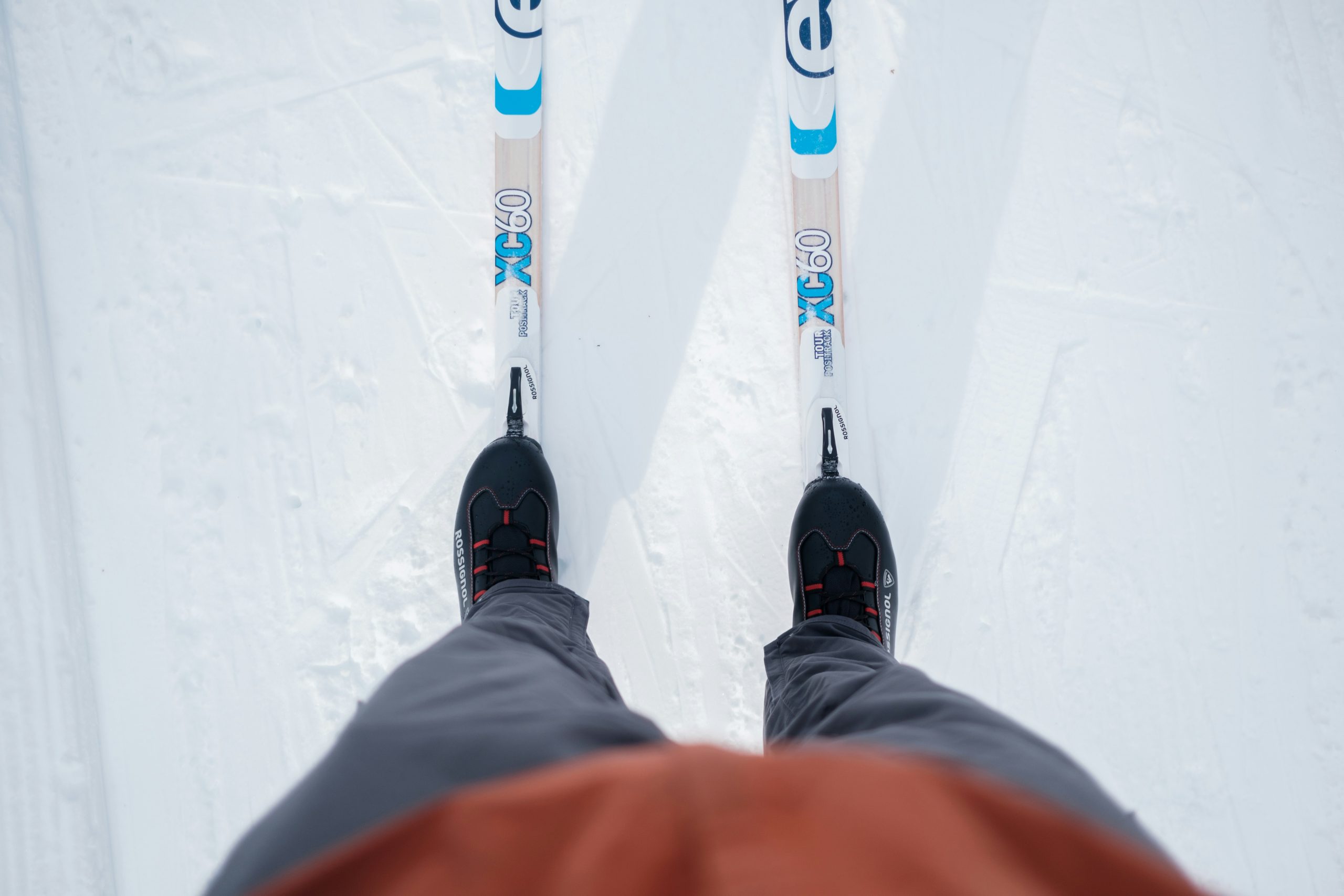
1. Classic Cross-Country Skis
These skis are long and thin and have a grip zone in the middle to prevent you from sliding backwards. The tip and back of the ski are referred to as glide zones and allow you to easily slide forward when you lift your foot.
2. Skate Skis
Skate skis don’t have a grip zone and they are typically shorter than other skis to make it easier to manoeuvre them. If the skis were too long they could end up crossing over at the back or be too heavy to move easily.
3. Cross-Country Boots
These boots are very different to regular downhill ski boots. Cross-country ski boots are more like comfortable low-cut walking boots, and they attach to the skis only at the front, allowing you to freely move your heel up and down.
4. Poles
The only difference between cross-country poles and the poles used for other ski disciplines is their height. Classic cross-country ski poles tend to reach shoulder height, whereas, skate skiing poles tend to be even longer, reaching almost to your ears!
5 Top Tips for Your First Cross-Country Skiing Holiday:
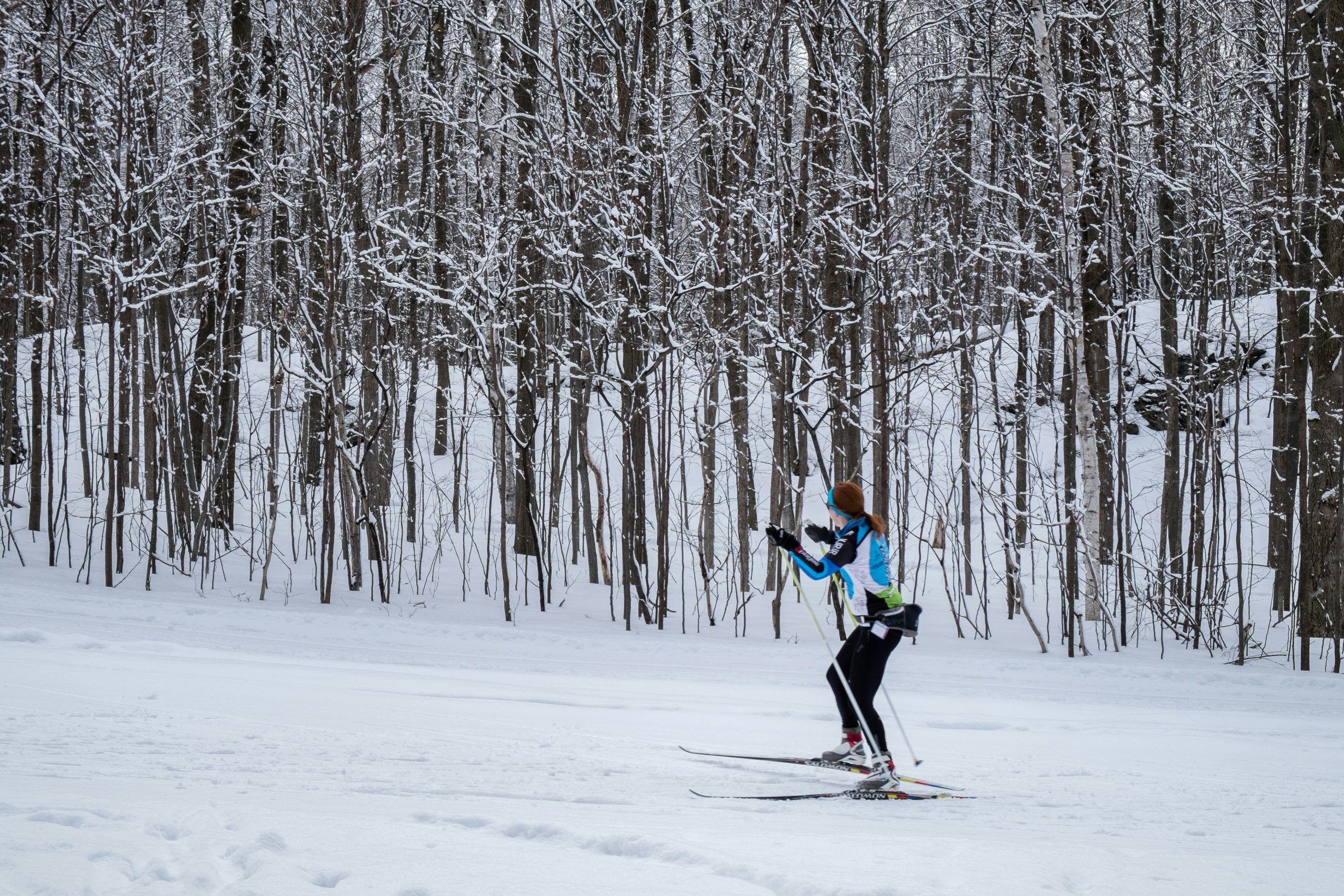
1. Learn From an Instructor
Although cross-country skiing may seem a lot easier than learning how to downhill ski or telemark, it is still important that you learn the basics before you try to go out by yourself. An instructor can give you insight into how to use your equipment properly and make sure that you are moving correctly so that you don’t injure yourself and get the most out of your experience. Browse our cross-country ski instructors today!
2. Make Sure Your Boots Fit Correctly
Cross-country ski boots should be less restrictive than downhill ski boots. Make sure that you get your boots fitted by a professional and that you feel comfortable in them before heading out on the mountain. There’s nothing worse than sore feet from poor-fitting boots!
3. Dress Appropriately
For cross-country skiing, it is recommended to wear thinner layers than you would wear downhill skiing as you won’t reach as high altitudes and will work up a sweat! Thermal leggings are recommended as salopettes can be too bulky and restrict your range of movement. Always take into account the daily weather conditions!
4. Choose the Best Style for You
When choosing between skate skiing and classic cross-country skiing, think about what you want to get from your time on the mountain. If you are looking for more of a workout and a challenge, skate skiing may be best for you. Whereas, if you want to enjoy a less strenuous experience in nature and take in the views, classic cross-country skiing may suit you better. Classic cross-country skiing tends to be the best style for beginners as the technique is easier to learn.
5. Find the Right Track for You
Ski resorts will have detailed descriptions of their cross-country trails to help you understand where they lead and how difficult they are. Choose the right track for your level. It’s always best to start easier and then build up from there.
Book Your Cross-Country Skiing Lesson on Maison Sport
Now that you have all the knowledge you need, you are ready to embark on your first cross-country skiing adventure!
We’ve made it simple to find and book a top-rated cross-country ski instructor, who can open up the mountain for you to create unforgettable experiences.
To book your cross-country ski instructor just head to Maison Sport, select your resort and dates, and under the lesson tab select cross-country skiing, then choose your preferred instructor and enjoy!
Book cross-country skiing lessons on Maison Sport!
You might also like: A Beginner’s Guide to Ski Touring

